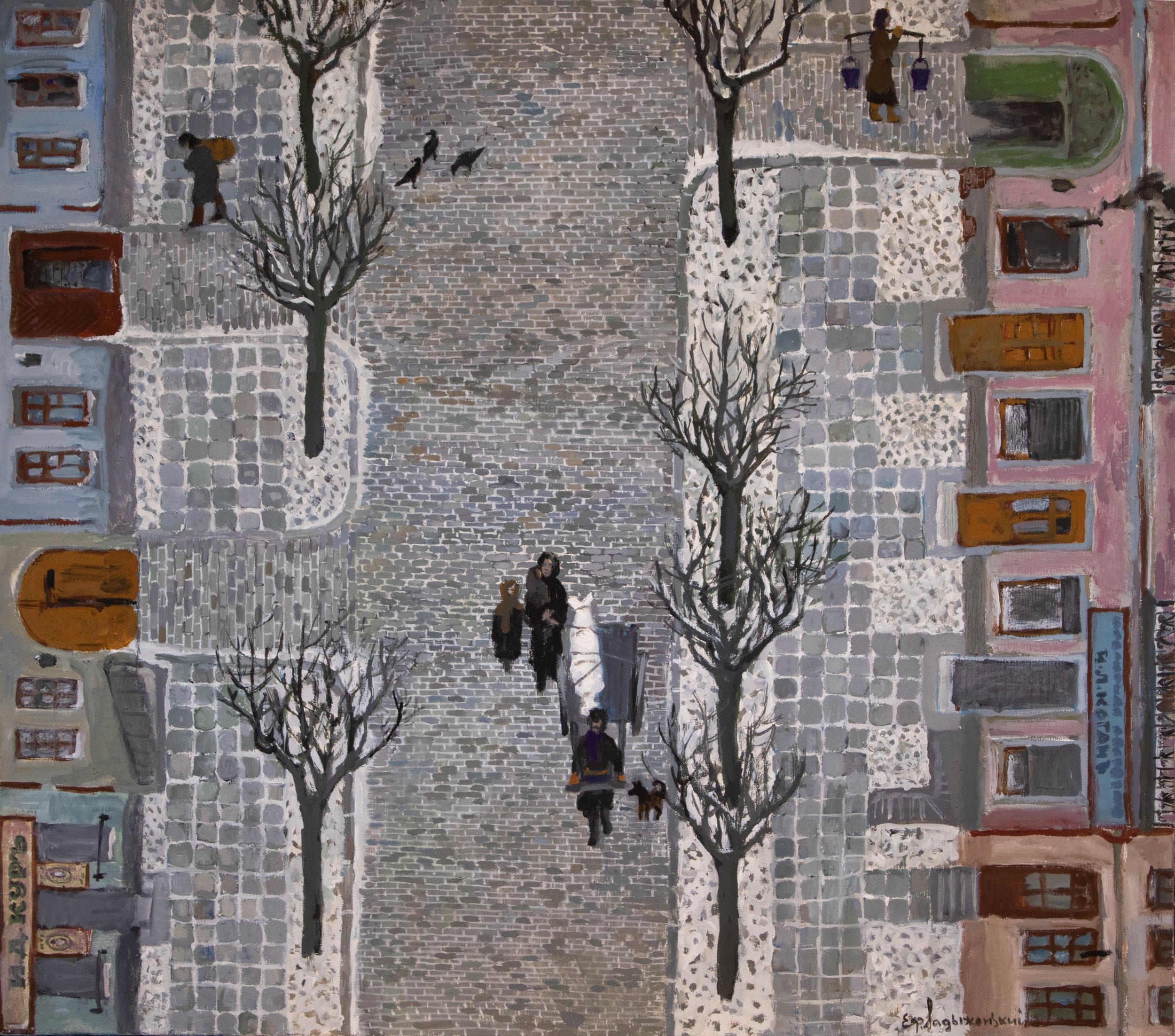Jewish Life
“I knew Jews, that's why I painted them, that's why I turned to Jewish life with pleasure every time. How I knew them! I knew what a kind people they were.”
-

Yefim Ladyzhensky, Minyan, Date Unknown, Collection of Mark Kelner and Margarita Litvak-Kelner.
A minyan, a quorum of ten (traditionally male) Jewish adults, is required to complete certain Jewish prayers and religious obligations. Here, the Jews of Odessa pray together in contrasting outfits, demonstrating Jews’ changing place in Soviet society: four men wrapped in tallitot, fringed prayer-shawls, are joined by a soldier and five men dressed as municipal workers.
-

Yefim Ladyzhensky, Blessings to the Bridegroom and the Bride, 1974, Collection of Mark Kelner and Margarita Litvak-Kelner.
“In my time every man had to get married. Wedding! And where there’s a wedding, there’s an engagement, with throwing a plate on the floor, slapping each other’s hands and shoulders, drinking wine, eating, weeping and laughing, and hoping. Hoping that, if with God’s help there’s no war or plague, damn them both, there will be a wedding soon.”
-

Yefim Ladyzhensky, To the Second Jewish Cemetery (Mr. Mirvis’ Funeral), 1974, Collection of the artist’s family.
The prosperous Mirvis family, also depicted in Madam Mirvis Bought a Piano, is shown here in a funeral procession, passing a synagogue on the left-hand side of the painting.
-

Yefim Ladyzhensky, My Street in 1921 , Date Unknown, Collection of Zachary Levine.
“Papa, an official in the fish industry, knew how to overcome any hardship when it came to his work, but he gave in when it came to hardships created by people, not fish. And so when the ground was cut from under his feet, he lost heart and fell ill, not ever trying to find it again, conserving his strength for himself, giving up on life altogether.”
